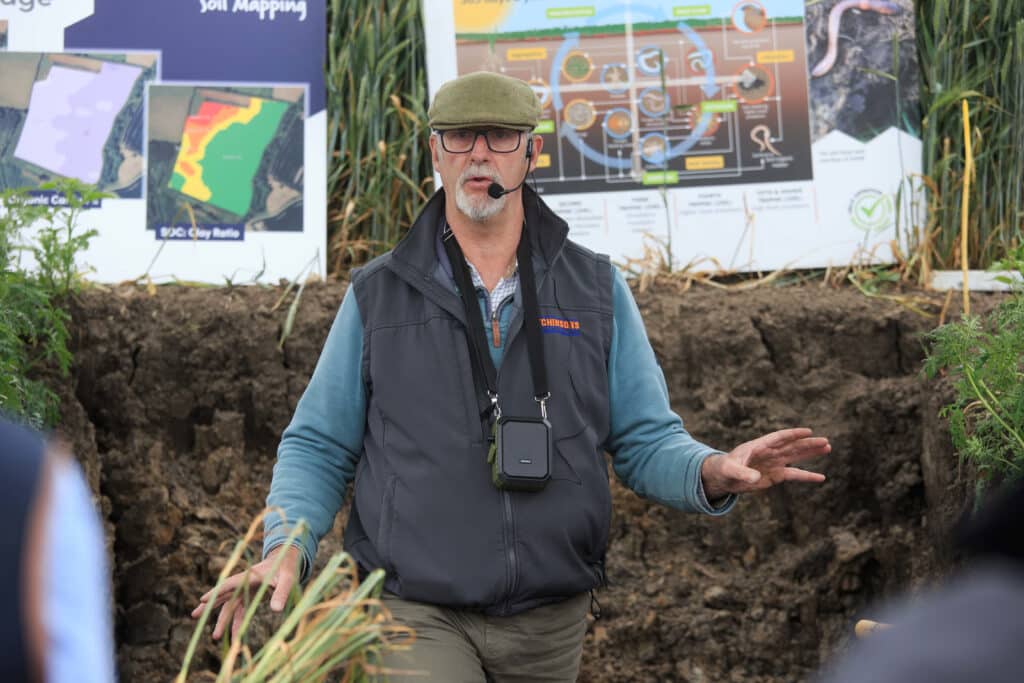Top tips for healthy cereal crop rooting – Farmers Guide
Appropriate cultivations, seed rates, and careful selection of early inputs such as seed treatments and biostimulants will all help improve winter cereal crop establishment ...
That’s the view of Hutchinsons agronomist and soils expert Dick Neale, who’s involved in running the company’s ‘Healthy Soils Connected’ training programme, which hosts grower groups to discuss soil and plant relationships.
Significant interest in the programme indicates a real desire to manage these relationships better, with one of the key discussion topics amongst participants being rooting and how it can be improved when preparing land for winter cereals.
Well-developed, healthy root systems are essential for crops to optimise water and nutrient capture as soon as seed germinates and throughout the season, so amending soil structure and preparing seedbeds well are essentials for a good start.
Compaction busting
Dick says any sub-soiling should be targeted to where necessary, so taking a spade and inspecting the soil profile for compaction is important in avoiding any “recreational tillage”.
Where a min-till approach is based on machines like a Sumo Trio, growers are urged to adjust depth of the machine’s subsoiling tine wings to just beneath the level of compaction.
This level often differs between headlands and the main body of the field, so regular adjustment is required to optimise lift and shatter.
Mole ploughing is an under-utilised method on suitable soils, such as clays, where in addition to creating the important drainage channel, the machine also induces fissuring throughout the profile to help rooting.
A final point on cultivation is to avoid overworking soils, says Dick, with many farms choosing to move more over the past two autumns than they have done previously due to some big, intense periods of rainfall.
“They are trying to help water move through the profile better, but ultimately it has resulted in an overworking of some soils, which then slumped and impacted establishment when it did rain.
“For many of the drills we have now, you don’t need a very fine seedbed, so it’s important to understand that and only do as much as you need for the system you have,” he explains.
Seed rates
Seed rate is the next major consideration in encouraging rooting.
Going too heavy can cause more interplant competition and upright growth and more above ground biomass at the expense of roots.
But if too light, growers can lose yield should the optimum plant population not be reached.
Dick says that it is no longer appropriate to prescribe a generic seed rate, as the drills being used differ hugely when considering row widths and seed spacing within the row.
For example, a tine based Claydon system will spread seed in a wider band than a Horsch Avatar disc drill, impacting on how those seedlings and their root systems develop within the row.
“You need to understand these nuances and that’s why last year, Hutchinsons produced a seed rate calculator that accounts for differences between all the major drill models currently on the market.
“It’s not necessarily about drilling a thinner crop, but you’ve got to drill and establish the right numbers at the right spacing, depending on which drill you are using,” explains Dick.
Early crop inputs are the final consideration when looking to encourage vigorous and healthy root systems, and Dick says phosphite – as a seed treatment or foliar treatment early post-emergence – is a proven option.
“I also encourage growers to consider a phosphate-based placement fertiliser like Primary P or a struvite P product like Crystal Green.
“They can help plants access the nutrients they need during early establishment, and effectively replace the need for overall applications of P fertiliser.”
He adds that it is important to calculate the required amount of fertiliser placed with the drill as, like seed, it is critical that the right amount is placed in the row or band, explaining: “Too much can be toxic and detrimental to crop growth.”
